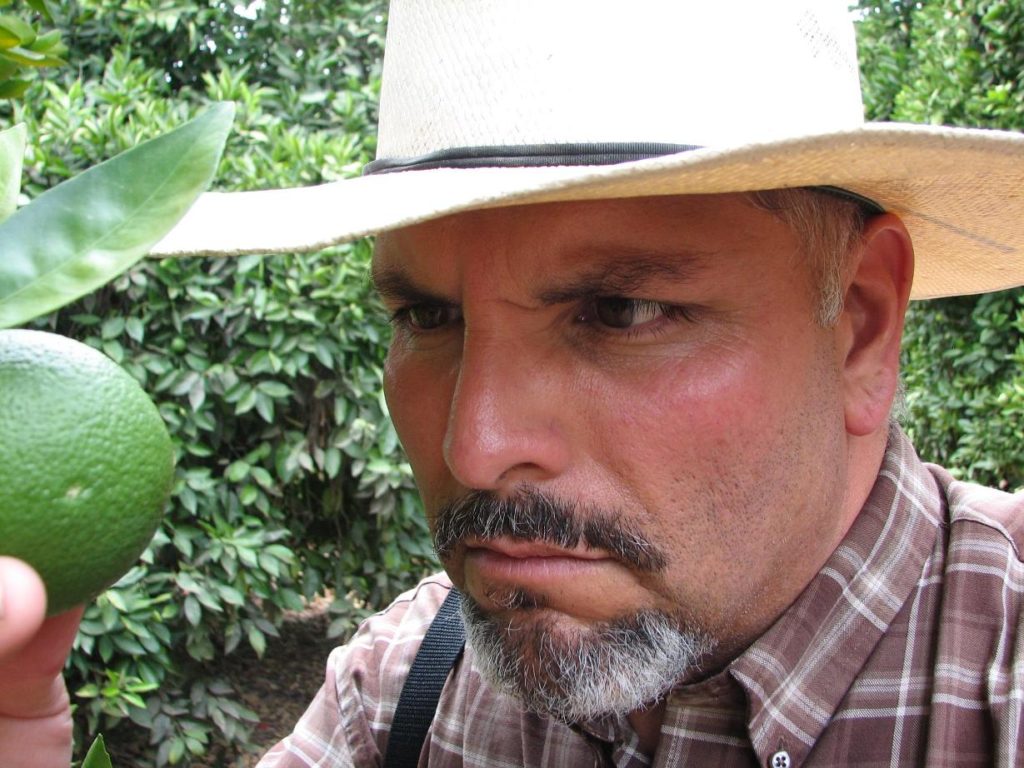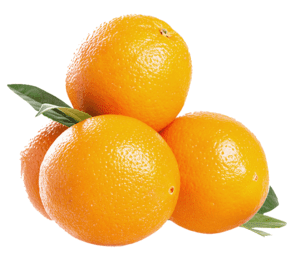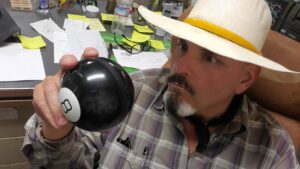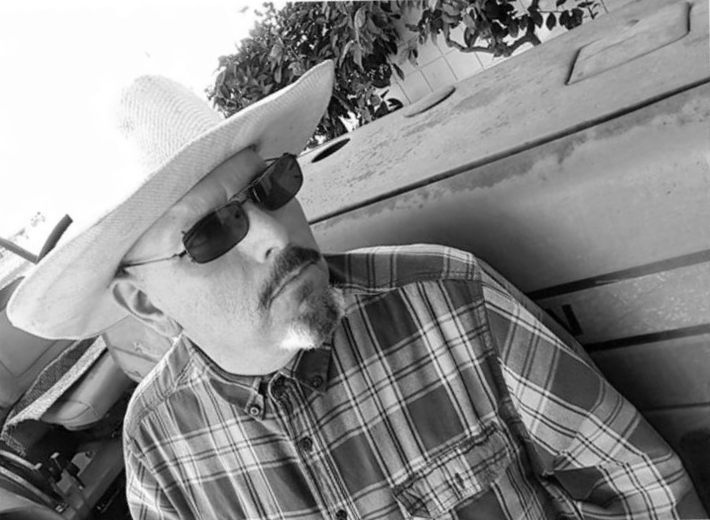Ask Farmer Tony

Hi there, I’m “Farmer Tony”, if you have any questions about caring for citrus or farming, please email me, I’ll be happy to try and help. Send it to: tony@pearsonranch.com Please remember to put me on your email “white list” or my response could end up in your spam folder (no bueno). Also, you can read our Citrus Growing Tips page for all the basic info you need to successfully grow citrus.
I even have a blog entitled “An Orange A Day” where you can read about the thoughts and ideas of an orange farmer like me! (Finally, the real reason the internet was created.)
As if THAT wasn’t enough, you can now keep in touch with me Farmer Tony on Facebook and you can see what I am up to on Instagram. Be sure to check out our YOUTUBE Channel for short little clips on how we farm oranges!
Cheers!
Sustainability On Our Farm
People often ask whether we practice “sustainable farming” on our land. Though we are NOT an “organic” farming operation, we do care about the environment! We know that the land not only provides all our workers with jobs, we know that future generations of farmers will need good, healthy land to continue farming here, in one of the most diverse farming regions on the planet! Here are just some of the ways we do our part to be as “sustainable” as possible. We “recycle” all plant material we cut from the trees when we prune, top and hedge the trees, by shredding up the branches and leaves then disking (via tractor) them back into the soil as a mulch. Any fruit that doesn’t meet our standards for shipping, we donate to our local food banks to be distributed locally to those in need. And of the fruit we don’t donate, we place the fruit on the ground in different parts of the grove to be disked down to be used as a soil amendment. With the drought and water shortage we are experiencing in California, we use our irrigation water responsibly and use small micro-sprinklers, as to not use any extra water unnecessarily, unlike some farms that continue to use flood irrigation. All used cardboard from our facility is dropped off at our local recycling facility for recycling. Also too, in any of the packages we send out that require packaging peanuts, we only use cornstarch packing peanuts that actually biodegrade in water!
As a small family farm, the struggles of modern day farming, in conjunction with new challenges from climate change, makes farming an occupation “not for the faint of heart.” However, our commitment to take on these challenges is something that (unlike the weather) does not change!
F.Y.I. here is an ORANGE F. A. Q. page for you to read.

What is the origin of the Orange?
Some historians believe that the Orange was being cultivated in China as far back as 2500 BC. The Romans planted Orange trees across Africa prior to the fall of their empire in the 5th century AD. The Moors, whose conquest took them to Spain around the mid 8th century, are attributed to the spread of oranges around Spain. Eventually another group, the Saracens, took them to Sicily. The First time Oranges ventured across the Atlantic was with Christopher Columbus in 1492. He took them to Hispaniola, and within a very short time Oranges were found throughout the Caribbean. The Portuguese transplanted them to Brazil. Around roughly the same time, the Spanish took them to their settlement in St. Augustine, Florida.
Where did Navel Oranges come from?
In 1820, in a monastery garden in Bahia, Brazil, a hybrid of the Sweet Orange known as the Bahia Navel Orange was born. Brazil sent a dozen of these trees to the U.S. Department of Agriculture in Washington D.C. in 1870.
Mrs. Eliza Tibbetts of Riverside, CA wrote to the U.S.D.A. in 1873 asking for two of the new Navel oranges, never knowing that she would revolutionize the commercial Orange industry in California.
This new mutant bud stock called the Bahia Navel, was renamed the Riverside Navel, and then renamed again the Washington Navel after George Washington for a more national appeal. All new varieties of Navel Oranges can trace their roots back to the Washington Navel.
California Navel Oranges are seedless and larger than the Sweet Orange. Its thick, bright orange skin was easy to peel and protected it for shipping. The sweet, full-bodied sections made for an excellent eating orange.

When are the Navel and Valencia Orange seasons?
Depending on the weather, Navel oranges are being picked as early as October to November through the end of May. The full flavor and color of the Navel Orange usually isn’t set until after Thanksgiving. Valencia oranges are harvested from April through September/October.
How long can an Orange tree produce fruit?
The productivity of an Orange tree can be practically endless. With proper care and irrigation practices, the Orange tree can continue to produce well up to 70 to 80 years.
How many crops a year do you yield from an Orange tree?
One. From blossom to harvest, it can take an Orange seven to ten months (depending on the variety), to come into full maturity. New varieties and growing techniques are constantly being developed in order to provide Navel Oranges almost year round.
What happens once a Pearson Ranch Orange is picked?
After being picked, these carefully grown Pearson Ranch Oranges are transported to the packinghouse. From here the orange is cleaned, waxed, and sorted by size and grade. Hand selected for both their exterior beauty and delicious flavor each Pearson Ranch Orange is packed carefully into 5, 10, 20 or 35 lb. carton. From pick to pack to ship, we strive to deliver the best citrus fruit in the world to you.
Can I grow an Orange tree from an orange seed?
Yes, kinda’. Although something will grow, it could appear bush-like and dangerously thorny. This is known as a “Wild Sucker”. In order to grow a tree that will produce oranges on a regular basis, you will want to buy an orange tree. Most orange/citrus trees are typically grafted from a parent rootstock which has been chosen for its ability to produce a tree that is stronger, healthier, and more able fend off citrus pests and diseases and put on a real crop of fruit!
How do you keep Oranges safe during cold weather?
Although citrus trees require a certain number of chilling hours to produce that signature sweet-tart flavor, we must always ensure the fruit is safe from extreme cold or sub freezing temperatures. Oddly enough the best defense against extreme cold temperatures is well water. On nights when the temperature is going to drop below 28 degrees Fahrenheit for more than 4 hours, irrigation water is turned on until the sun comes up and the temperature once again starts to rise. How does this work? Insulated by the earth, domestic well water, or irrigation water comes out of the ground at an average of 54 degrees Fahrenheit. As the water reaches under the tree via sprinkler head, the water releases its heat under the tree’s thick, “leaved” canopy, in an effort to keep the fruit from freezing. Wind Machines also help with frost protection when there is a good inversion layer above the trees, by re-directing the warmer air that has risen (which was released by the earth) back down to ground level.
Are Oranges still harvested by hand?
Yes. This is a physically demanding and intense job. The skill and care of a good picker can make the difference between a gift piece of fruit or one that will not be shipped at all. We are very selective about the picking crews that work in our grove and we are very thankful for their great work and contribution to American Agriculture.
How much of the citrus distributed in the U.S. is grown in CA?
California is the largest producer of eating oranges. Florida is the largest producer in the U.S. for juice oranges. Combined they produce nearly 25 billion pounds of Oranges a year! And that my friends is a lot of Vitamin “C”.
From all of us here at LOVE Citrus/Pearson Ranch, we can’t thank you enough for helping to keep America’s small family farms working towards the future of agriculture!





